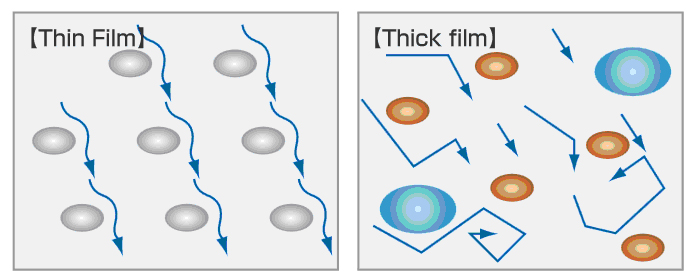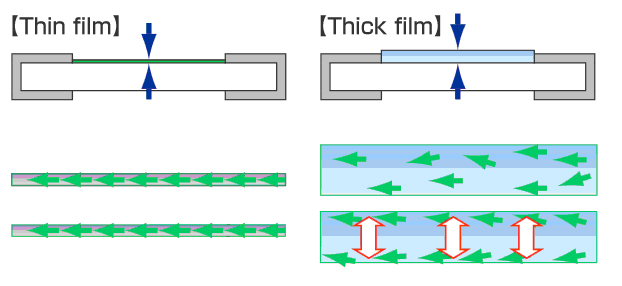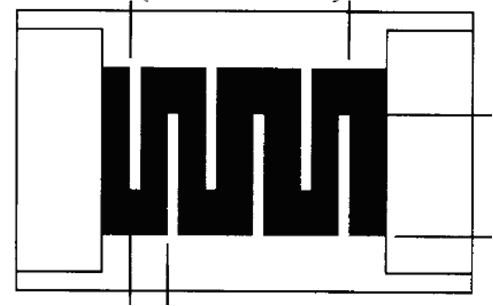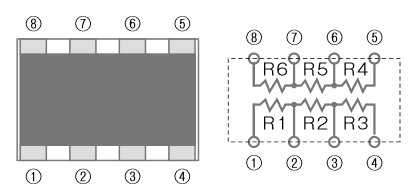Zoltán Kiss- Area Sales Manager - East Europe - Endrich GmbH.
Thin film precision resistor families – SUSUMU
13 April 2015

Summary :
Design engineers should be very careful when selecting precision resistors to be used in electric circuits. The low initial tolerance – the maximum difference between the defined and the measured resistance value after component production – provides adequate functionality to the circuit, while precisely kept resistance in time and due to environmental circumstances - such as temperature rise , shock or vibration - is necessary to provide stability of performance during lifetime of the electronic product. Digital electronics in general are less sensitive for resistor tolerances, but analog, especially measuring circuits can fail working right, loosing their stability when the applied resistors are not keeping their values. In this paper we review those factors, that have effect on system stability and introduce some interesting precision resistor families from Japanese leading manufacturer SUSUMU.
Factors having influence on stability
TEMPERATURE RISE
The resistance stability is mainly affected by temperature changes. The factor called TCR (Temperature Coefficient of Resistance ) describes the resistance change in function of the temperature change :

[ppm/°C], where
R1: Resistance value on temperature T1 (room temperature);
R2: Resistance value at temperature T2 (operation temperature)
In some applications, that use resistive elements the huge TCR is an advantage (e.g. non linear thermistors used for temperature measurement), however for linear resistors, especially precisely manufactured or selected precision resistors, TCR should be kept low in order to reserve precision in time and in other environmental conditions, such as at higher temperature.
SUDDEN ENERGY CHANGE
PCR (Power Coefficient): This factor describes the affect of self heating (I2R) generated thermal shock, caused by sudden energy change.
LOAD LIFE
Other factor describing reliable resistors is the load life stability, which is the ability to handle high loads or long term high temperature.
REPETITIVE STRESS
Temperature cycling is a factor that shows resistors’ capability to withstand repetitive stress (frequent on and off switching) without drift.
TRANSIENT OVERLOAD
Short time overload (STO) capability is to describe how resistor can handle short duration but huge overstress, that may cause mechanical forces and change internal structure, therefore resistance change, caused by heat expansion.
ESD
ESD capability is to describe how resistant the component is against electro static discharge, that may cause hidden structural failures in the material
ENVIRONMENT
Generally - but specifically for thin film resistors - the environmental aspects like humidity and/or presence of waste gas should be considered. Depending on the concentration in the surrounding air the proper protection coating should be selected.
SUSUMU thin film precision resistors
In order to achieve low noise at low frequencies (near to DC), component manufacturers should use special material when designing resistors especially when applied voltage is low. In this case thin film structure has more advantages.

At low frequency (or DC), the unique (nanometer) particle size of the thin film structure provides even electron flow, while in thick film structure the various size of the particles cause diversion in electron flow therefore noise.
At high frequencies electrons are forced to flow on the surface of a conductor due to the skin effect. As the electrons need a certain diameter to flow through, in thin film structure skin effect is not causing big changes, while in thick film the resistance grows, as the used cross-section is smaller than in low frequency, where the electrons flow through the whole conductor. So thin film structure has more resistance stability also in high frequency up to several GHz.

Metallic materials usually have positive, non-conductive and semiconductor materials have negative TCR. Thick film resistors are constructed as a composite of metal and non-conductive materials, so on higher resistance value, due to the dominant dielectric materials, the TCR is negative, on lower resistance thanks to the metal domination, thick film resistor has positive TCR. Susumu’s thin film resistors are targeting near 0 TCR (+/-5ppm/°C) due to - among others - the used inorganic passivation technology.
Environmental protection:
High humidity or high containment of waste gases in the surrounding air are one of the greatest influence factors on long term stability of thin film chip resistors. It is necessary to protect the resistive element on the chip well. While the normal attempt to use a single layer of epoxy may be the economical way for production, the expected drift after 1000 hours of operation at 70°C. with rated power (90min. on / 30min off) is about +/- 0.5%. Susumu’s RR type, which uses dual layer of epoxy protection coating, offers drifts less than about +/- 0.25% after the same test. For high reliability applications such as automotive, Susumu offers the unique RG type which uses a Si2O3 glass passivation directly on the resistive material plus an epoxy over coating. Drift after the a.m. test is typically less than +/- 0.01%.

Some of the special families and their properties are described in below chart :
| Series | Description |
|---|---|
| URG | Extreme low TCR and long term stability |
| RG | High performance automotive type |
| RR | Standard thin film series |
| RM | Extreme low tolerance and TCR resistor network |
| RT | Trimmable thin film resistor |
| PRG | High power thin film resistor with long side terminals |
| RGA | Resistor with gold terminal |
| NRG | Non magnetic type of resistor for medical applications |
Trimmable thin film resistors
Developers of electronic circuits often use trimmable potentiometers for final tuning of their devices at last step of mass production. This solution has some risks, as the misalignment and drift of the resistance value may make the circuit unstable. Susumu offers a solution for this problem by introducing the trimmable thin film resistor family RT. They make this precision resistor family with laser trimming on the way, that it can be further trimmed at final assembly by laser cutting exactly to the desired resistance value. On this way the tolerance of the resistor as well as the long term stability can be enlarged by orders of magnitude.

Precision resistor networks
Stability of voltage dividers made out of discrete resistors highly depends on the individual TCR of each resistors. In case resistors lay in the same package, made in the same time, from same material by exact laser etching, whatever happens with resistance values in time for due to temperature change, all resistors will be affected the same way, as their TCR is the same, so the voltage proportions remain unchanged.

The RM series have 1:1 ... 1:500 resistance division, 0.5%..0,01% initial tolerances and 0.5ppm/K..5ppm/K TCR values. SUSUMU’s highly reliable, long life, sulfur resistant resistor networks are very popular the automotive, medical and measuring industry.
| Share on Facebook | Share on LinkedIn |
References
This article has been published on the following locations:
| # | Media | Link |
|---|---|---|
| 1 | Elektronet 2015/3 | Elektronet : elektronikai informatikai szakfolyóirat, 2015. (24. évf.) 3. sz. 24-25. old. |
| 2 | Elektronet online | Vékonyréteg-precíziós ellenállások – SUSUMU |
| 3 | Hungarian version | Vékonyréteg precíziós ellenállások - SUSUMU |
| 4 | TechStory M2M | Vékonyréteg-precíziós ellenállások |
| 5 | South-East European Industrial Market 2016/4 | Thin-film precision resistors - Susumu |


